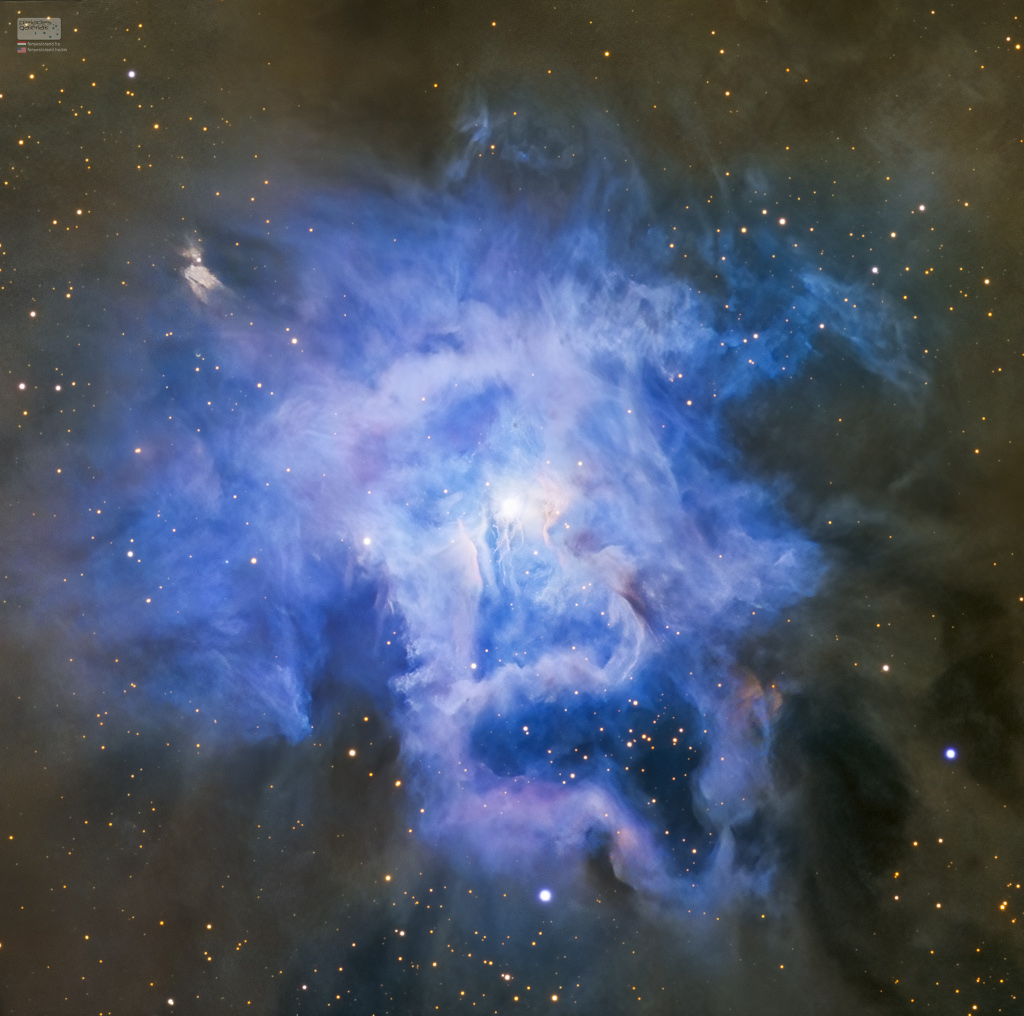Blog
Albert Luandrew (September 5, 1906 – March 17, 1995), known as Sunnyland Slim, was an American blues pianist who was born in the Mississippi Delta and moved to Chicago, helping to make that city a center of postwar blues.
Chicago broadcaster and writer Studs Terkel said Sunnyland Slim was “a living piece of our folk history, gallantly and eloquently carrying on in the old tradition”.
Sunnyland Slim was born on a farm in Quitman County, Mississippi, near the unincorporated settlement of Vance. He moved to Memphis, Tennessee, in 1925, where he performed with many of the popular blues musicians of the day. His stage name came from the song “Sunnyland Train”, about a railroad line between Memphis and St. Louis, Missouri. In 1942 he moved to Chicago, in the great migration of southern workers to the industrial north.
more...John Milton Cage Jr. (September 5, 1912 – August 12, 1992 LA,CA) was an American composer and music theorist. A pioneer of indeterminacy in music, electroacoustic music, and non-standard use of musical instruments, Cage was one of the leading figures of the post-war avant-garde. Critics have lauded him as one of the most influential composers of the 20th century. He was also instrumental in the development of modern dance, mostly through his association with choreographer Merce Cunningham, who was also Cage’s romantic partner for most of their lives.
Cage’s teachers included Henry Cowell (1933) and Arnold Schoenberg (1933–35), both known for their radical innovations in music, but Cage’s major influences lay in various East and South Asian cultures. Through his studies of Indian philosophy and Zen Buddhism in the late 1940s, Cage came to the idea of aleatoric or chance-controlled music, which he started composing in 1951. The I Ching, an ancient Chinese classic text and decision-making tool, became Cage’s standard composition tool for the rest of his life. In a 1957 lecture, Experimental Music, he described music as “a purposeless play” which is “an affirmation of life – not an attempt to bring order out of chaos nor to suggest improvements in creation, but simply a way of waking up to the very life we’re living”.
Cage’s best known work is the 1952 composition 4′33″, a piece performed in the absence of deliberate sound; musicians who present the work do nothing but be present for the duration specified by the title. The content of the composition is intended to be the sounds of the environment heard by the audience during performance. The work’s challenge to assumed definitions about musicianship and musical experience made it a popular and controversial topic both in musicology and the broader aesthetics of art and performance. Cage was also a pioneer of the prepared piano (a piano with its sound altered by objects placed between or on its strings or hammers), for which he wrote numerous dance-related works and a few concert pieces. These include Sonatas and Interludes (1946–48).
more...Picture of the Week was actually taken in the Chilean Atacama Desert rather than the African savannas. Taking centre stage is ESO’s Extremely Large Telescope (ELT), or part of it, at least.
The ELT’s steel dome is about 80 metres tall and one day it will play host to the world’s biggest eye on the sky. When finished, the dome will weigh some 6100 tonnes and be capable of rotating 360 degrees on a set of 36 stationary trolleys.
This spectacular photograph of the sunrise over Cerro Armazones, the ELT’s perch, was shot on 29 August from around 23 kilometres away on top of another famous mountain: Cerro Paranal, home to the ELT’s older sibling, ESO’s Very Large Telescope, or VLT. You could say the stars were aligned for this image: since the position of the sunrise changes throughout the year as the Earth moves around the Sun, there’s only a narrow window of time when the sunrise frames the ELT if observed from Paranal.
What’s more, if you look carefully, you can just about make out two sunspots on the Sun’s surface. These dark, cooler regions are formed by intense magnetic fields. While they may look small from this distance, in reality they’re the size of planets.

Darius Milhaud (French: [daʁjys mijo]; 4 September 1892 – 22 June 1974) was a French composer, conductor, and teacher. He was a member of Les Six—also known as The Group of Six—and one of the most prolific composers of the 20th century. His compositions are influenced by jazz and Brazilian music and make extensive use of polytonality. Milhaud is considered one of the key modernist composers. A renowned teacher, he taught many future jazz and classical composers, including Burt Bacharach, Dave Brubeck, Philip Glass, Steve Reich, Karlheinz Stockhausen and Iannis Xenakis among others.
more...Biréli Lagrène (born 4 September 1966) is a French jazz guitarist who came to prominence in the 1980s for his Django Reinhardt–influenced style. He often performs in swing, jazz fusion, and post-bop styles.
Lagrène was born in Soufflenheim, Alsace, France, into a Romani family and community. His father and grandfather were guitarists, and he was raised in the Gypsy guitar tradition. He started playing at age four or five and by seven was improvising jazz in a style similar to that of Django Reinhardt, whom his father admired and wanted his sons to emulate. In 1980, while in his early teens, he recorded his first album, Routes to Django: Live at the Krokodil (Jazzpoint, 1981).
During the next few years, Lagrène toured with Al Di Meola, Paco de Lucía, and John McLaughlin, all of them guitarists, and played with Benny Carter, Benny Goodman, and Stéphane Grappelli. He joined Larry Coryell and Vic Juris in New York City for a tribute to Reinhardt in 1984 and went on tour with Coryell and Philip Catherine. He also performed with Jaco Pastorius, Stanley Clarke, the Gil Evans Orchestra, Christian Escoudé, and Charlie Haden. In 1989 he performed in a duo with Stanley Jordan.
His collaboration with Italian guitarist Giuseppe Continenza, with whom he has performed in numerous concerts and festivals, including the Pescara Jazz and the Eddie Lang Jazz Festival, began in 1998, when the two met behind the scenes of a festival and started talking about each other’s musical interests.
more...Gerald Stanley Wilson (September 4, 1918 – September 8, 2014) was an American jazz trumpeter, big band bandleader, composer, arranger, and educator. Born in Mississippi, he was based in Los Angeles from the early 1940s. In addition to being a band leader, Wilson wrote arrangements for Duke Ellington, Sarah Vaughan, Ray Charles, Julie London, Dizzy Gillespie, Ella Fitzgerald, Benny Carter, Lionel Hampton, Billie Holiday, Dinah Washington, and Nancy Wilson.
Wilson was born in Shelby, Mississippi, and at the age of 16 moved to Detroit, Michigan, where he graduated from Cass Technical High School (one of his classmates was saxophonist Wardell Gray). He joined the Jimmie Lunceford orchestra in 1939, replacing its trumpeter and arranger, Sy Oliver. While with Lunceford, Wilson contributed songs to the band, including “Hi Spook” and “Yard-dog Mazurka”, the first influenced by Ellington’s recording of “Caravan” and the latter an influence on Stan Kenton‘s “Intermission Riff”.
more...Webb’s NIRCam (Near-Infrared Camera) captured this detailed image of SN 1987A (Supernova 1987A). At the center, material ejected from the supernova forms a keyhole shape. Just to its left and right are faint crescents newly discovered by Webb. Beyond them an equatorial ring, formed from material ejected tens of thousands of years before the supernova explosion, contains bright hot spots. Exterior to that is diffuse emission and two faint outer rings. In this image blue represents light at 1.5 microns (F150W), cyan 1.64 and 2.0 microns (F164N, F200W), yellow 3.23 microns (F323N), orange 4.05 microns (F405N), and red 4.44 microns (F444W). The supernova lies about 168,000 light-years away in the constellation Dorado. Webb peered across this great distance to spy the former star’s dusty remains, including a central structure dubbed the keyhole.

Granville William “Mickey” Roker (September 3, 1932 – May 22, 2017) was an American jazz drummer.
Roker was born into extreme poverty in Miami to Granville (Sr.) and Willie Mae Roker. After his mother died (his father never lived with them), when he was only ten, he was taken by his grandmother to live in Philadelphia with his uncle Walter, who gave him his first drum kit and communicated his love of jazz to his nephew. He also introduced the young Roker to the jazz scene in Philadelphia, where drummer Philly Joe Jones became Roker’s idol.
In the early 1950s, he began to gain recognition as a sensitive yet hard-driving big-band drummer. He was especially favored by Dizzy Gillespie, who remarked of him that “once he sets a groove, whatever it is, you can go to Paris and come back and it’s right there. You never have to worry about it.” Roker was soon in demand for his supportive skills in both big-band and small-group settings.
While in Philadelphia he played with Jimmy Oliver, Jimmy Heath, Jimmy Divine, King James and Sam Reedbefore moving to New York in 1959, where his first gigs were with Gigi Gryce, Ray Bryant, Joe Williams, Junior Mance, Nancy Wilson and the Duke Pearson big band.
In 1965 Mickey joined Art Farmer and Benny Golson’s revamped group, the “New York Jazz Sextet”.
In 1992, he replaced Connie Kay in the Modern Jazz Quartet.
He recorded with Dizzy Gillespie, Sonny Rollins, Duke Pearson, Tommy Flanagan, Ella Fitzgerald, Zoot Sims, Horace Silver, Junior Mance, Sarah Vaughan, Milt Jackson, Herbie Hancock, Phil Woods, Oscar Peterson, Ray Brown, Bucky Pizzarelli, Stanley Turrentine, Toshiko Akiyoshi, Hank Jones, Bobby Hutcherson, Joe Locke, and many other jazz musicians.
Roker was still active on the Philadelphia music scene during the 21st century. He died in Philadelphia, Pennsylvania, at the age of 84, of natural causes, though he had been suffering from diabetes, lung cancer, and other health issues.
more...Freddie King (September 3, 1934 – December 28, 1976) was an American blues guitarist, singer and songwriter. He is considered one of the “Three Kings of the Blues Guitar” (along with Albert King and B.B. King, none of whom were blood related). Mostly known for his soulful and powerful voice and distinctive guitar playing, King had a major influence on electric blues music and on many later blues guitarists.
Born in Gilmer, Texas, King became acquainted with the guitar at the age of six. He started learning the guitar from his mother and his uncle. King moved to Chicago when he was a teenager; there he formed his first band the Every Hour Blues Boys with guitarist Jimmie Lee Robinson and drummer Frank “Sonny” Scott. As he was repeatedly being rejected by Chess Records, he got signed to Federal Records, and got his break with single “Have You Ever Loved a Woman” and instrumental “Hide Away“, which reached number five on the Billboard magazine’s rhythm and blues chart in 1961. It later became a blues standard. King based his guitar style on Texas blues and Chicago blues influences. The album Freddy King Sings showcased his singing talents and included the record chart hits “You’ve Got to Love Her with a Feeling” and “I’m Tore Down”. He later became involved with producers who were more oriented to rhythm and blues and rockand was one of the first bluesmen to have a multiracial backing band at performances.
He was inducted into the Rock and Roll Hall of Fame by ZZ Top in 2012 and into the Blues Hall of Fame in 1982. His instrumental “Hide Away” was included in the Rock and Roll Hall of Fame’s list of “500 Songs that Shaped Rock“. He was ranked 25th in the Rolling Stone magazine’s 2003 edition of “100 Greatest Guitarists of All Time” and 15th in the 2011 edition.
Fred King was born in 1934 to Ella Mae King and J. T. Christian. When Freddie was 6 years old, his mother and his uncle taught him to play the guitar. In 1949, he and his family moved from Dallas to the South Side of Chicago.
Nearly constant touring took its toll on King—he was on the road almost 300 days out of the year. In 1976 he began suffering from stomach ulcers. His health quickly deteriorated, and he died on December 28 of complications from this illness and acute pancreatitis, at the age of 42.
According to those who knew him, King’s untimely death was due to stress, a legendary “hard-partying lifestyle”, and a poor diet of consuming Bloody Marys because as he told a journalist, “they’ve got food in them.”
more...John Len Chatman (September 3, 1915 – February 24, 1988), known professionally as Memphis Slim, was an American blues pianist, singer, and composer. He led a series of bands that, reflecting the popular appeal of jump blues, included saxophones, bass, drums, and piano. A song he first cut in 1947, “Every Day I Have the Blues“, has become a blues standard, recorded by many other artists. He made over 500 recordings. He was posthumously inducted into the Blues Hall of Fame in 1989.
Memphis Slim was born John Len Chatman, in Memphis, Tennessee. For his first recordings, for Okeh Records in 1940, he used the name of his father, Peter Chatman (who sang, played piano and guitar, and operated juke joints).
more...Jimmy Buffett, the singer-songwriter whose laidback Key West sound earned him a legion of “Parrothead” fans and spawned a musical and business empire, has died at the age of 76. His death was announced in a statement on his social media and websites late Friday. “Jimmy passed away peacefully on the night of September 1st surrounded by his family, friends, music and dogs,” the statement read.. “He lived his life like a song till the very last breath and will be missed beyond measure by so many.”
I had visited the Keys a few dozen times over the years and Jimmy B certainly made his mark on the Keys redefining Island Music. Never like that term especially (because of the Caribbean cultures use of this genre), but admired his cunning ability to create his own original brand of Country Island music! Have a great new adventure James.
more...
These cosmic clouds have blossomed 1,300 light-years away in the fertile starfields of the constellation Cepheus. Called the Iris Nebula, NGC 7023 is not the only nebula to evoke the imagery of flowers. Still, this deep telescopic image shows off the Iris Nebula’s range of colors and symmetries embedded in surrounding fields of interstellar dust. Within the Iris itself, dusty nebular material surrounds a hot, young star. The dominant color of the brighter reflection nebula is blue, characteristic of dust grains reflecting starlight. Central filaments of the reflection nebula glow with a faint reddish photoluminescence as some dust grains effectively convert the star’s invisible ultraviolet radiation to visible red light. Infrared observations indicate that this nebula contains complex carbon molecules known as PAHs. The dusty blue petals of the Iris Nebula span about six light-years.

Laurindo Almeida (September 2, 1917 – July 26, 1995) was a Brazilian guitarist and composer in classical, jazz, and Latin music. He and Bud Shank were pioneers in the creation of bossa nova. Almeida was the first guitarist to receive Grammy Awards for both classical and jazz performances. His discography encompasses more than a hundred recordings over five decades.
Laurindo Jose de Araujo Almeida Nobrega Neto was born in the village of Prainha, Brazil near Santos in the state of São Paulo.
Born into a musical family, Almeida was a self-taught guitarist. During his teenage years, Almeida moved to São Paulo, where he worked as a radio artist, staff arranger and nightclub performer. At the age of 19, he worked his way to Europe playing guitar in a cruise ship orchestra. In Paris, he attended a performance at the Hot Club de France by Stéphane Grappelli and famed guitarist Django Reinhardt, who became a lifelong artistic inspiration.
more...More Posts
- Gene Krupa Day
- World Fusion with Alsarah & The Nubatones
- Daily Roots with Sons of Jah
- Echoes of Freedom with Toni Morrison
- ÁNGEL “CACHETE” MALDONADO DIES AT 68
- The Cosmos with Orion’s Sword
- Allen Toussaint Day
- Grady Tate Day
- Kenny Wheeler Day
- World Music with Ángel “Cachete” Maldonado
- Daily Roots with Ijahman Levi
- Echos of Freedom by Chief Joseph
- The Cosmos with M17
- Melba Liston Day
- Joe Pass Day
- Danny Barker Day
- World Music with Nelia Safaie
- Daily Roots with the Viceroys
- The Cosmos with NGC 6726/6727 & IC 4812
- George Duke Day
